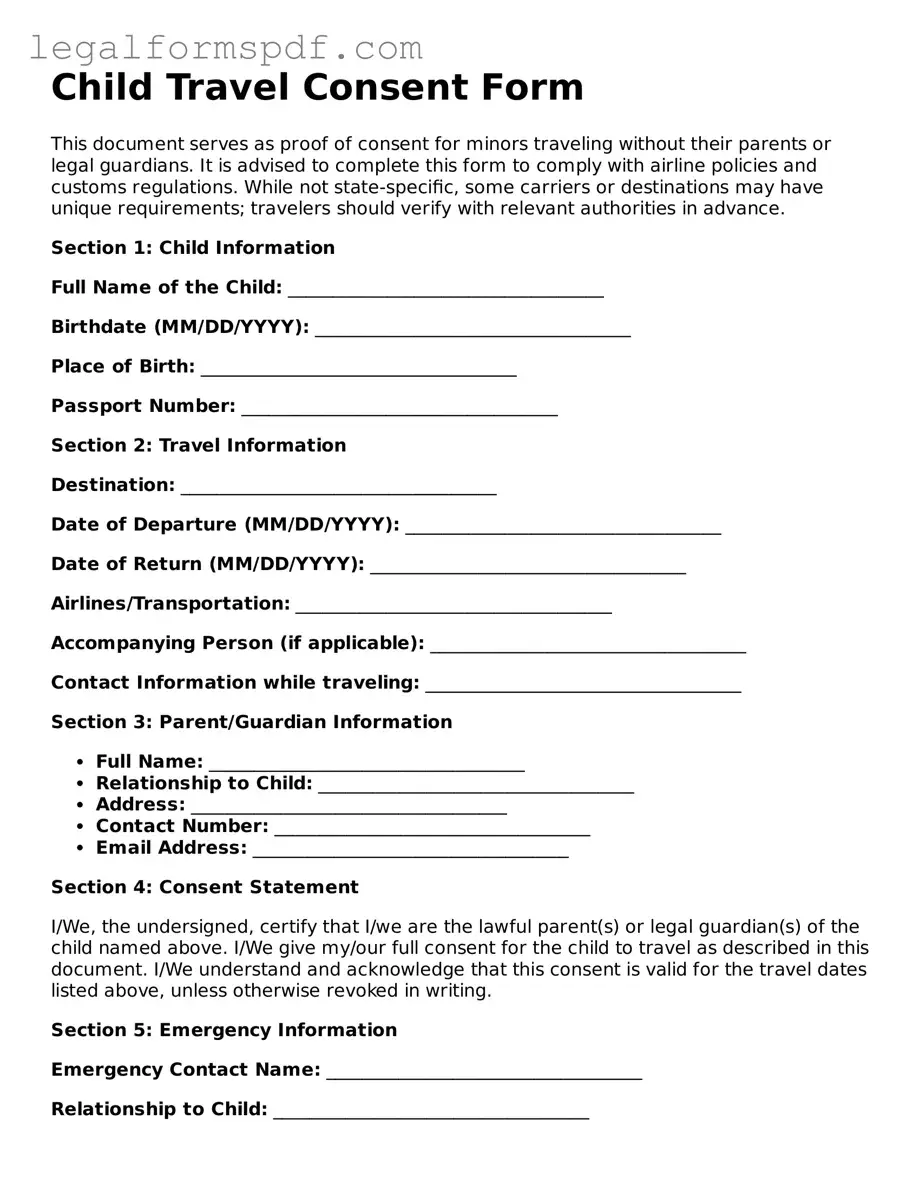Child Travel Consent Form
This document serves as proof of consent for minors traveling without their parents or legal guardians. It is advised to complete this form to comply with airline policies and customs regulations. While not state-specific, some carriers or destinations may have unique requirements; travelers should verify with relevant authorities in advance.
Section 1: Child Information
Full Name of the Child: ___________________________________
Birthdate (MM/DD/YYYY): ___________________________________
Place of Birth: ___________________________________
Passport Number: ___________________________________
Section 2: Travel Information
Destination: ___________________________________
Date of Departure (MM/DD/YYYY): ___________________________________
Date of Return (MM/DD/YYYY): ___________________________________
Airlines/Transportation: ___________________________________
Accompanying Person (if applicable): ___________________________________
Contact Information while traveling: ___________________________________
Section 3: Parent/Guardian Information
- Full Name: ___________________________________
- Relationship to Child: ___________________________________
- Address: ___________________________________
- Contact Number: ___________________________________
- Email Address: ___________________________________
Section 4: Consent Statement
I/We, the undersigned, certify that I/we are the lawful parent(s) or legal guardian(s) of the child named above. I/We give my/our full consent for the child to travel as described in this document. I/We understand and acknowledge that this consent is valid for the travel dates listed above, unless otherwise revoked in writing.
Section 5: Emergency Information
Emergency Contact Name: ___________________________________
Relationship to Child: ___________________________________
Contact Number: ___________________________________
Section 6: Signature
Parent/Guardian Signature: _______________________________ Date: ____________
Second Parent/Guardian Signature (if applicable): _______________________________ Date: ____________
This form should be accompanied by copies of the signing parent(s) or guardian(s) government-issued photo ID and, if applicable, documentation proving guardianship or a court order specifying travel permissions.
Note: While this form is a general template, it is the responsibility of the parent/guardian to ensure compliance with the laws of the departing, arriving, and any transit countries or states. Always check with your airline and destinations for additional requirements.
